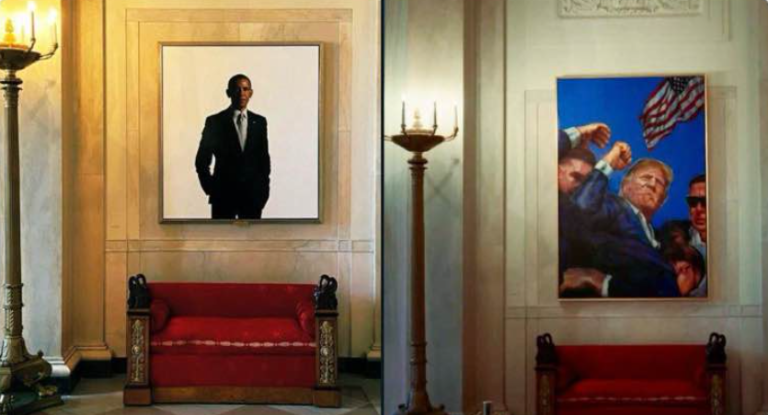In a move that is certain to provoke heated debate among political adversaries and supporters alike, the Trump administration has announced the revocation of the “parole” status that former President Joe Biden had extended to over 500,000 unauthorized migrants. This controversial program—designed to allow migrants from Cuba, Haiti, Nicaragua, and Venezuela to enter the United States without the need for a conventional visa—will now be dismantled, with a firm 30‑day deadline imposed for all affected individuals to exit the country voluntarily.
This decisive action represents not only a significant shift in U.S. immigration policy but also an ideological pivot toward a more traditional, enforcement-based approach to border security. By terminating the CHNV program, the current administration aims to reassert the rule of law, protect American communities from exploitation, and address widespread concerns over fraud within the system. In what follows, we provide an in-depth analysis of the program’s background, its operational shortcomings, the Trump administration’s rationale for ending it, and the ensuing political and humanitarian implications.
I. The CHNV Program: Origins and Objectives
A. Inception Amid a Crisis
The CHNV program was introduced in response to an unprecedented surge in illegal border crossings during a period of intense migration pressures. Its primary goal was to create a legal pathway for migrants from four countries—Cuba, Haiti, Nicaragua, and Venezuela—to enter the United States. At a time when the nation faced a complex mix of humanitarian and security challenges, the program was intended to serve as a controlled mechanism for managing the influx of individuals who might otherwise be forced to cross the border unlawfully.
Under the program, eligible migrants were granted “parole” status, which allowed them to enter the United States without following the standard visa process. In theory, this measure was designed to offer a humane alternative while also enabling federal authorities to monitor and process individuals through designated entry points. Prospective migrants were required to secure a sponsor based in the United States and travel via official airports, a system that was meant to prevent chaos at the border and relieve the pressure on Border Patrol resources.
B. The Promise of Orderly Immigration
By establishing a legal pathway, the CHNV program was expected to benefit both the migrants and the country. Advocates for the initiative argued that it would reduce dangerous, irregular border crossings and provide a measure of stability for individuals fleeing political instability and economic hardship in their home countries. The program was also seen as a pragmatic solution to an immediate crisis, allowing for a degree of regulation and oversight that could potentially integrate new arrivals more seamlessly into the U.S. system.
The administration’s hope was that by channeling migrants through official channels and requiring them to have a U.S.-based sponsor, the program would prevent the exploitation of the border and reduce the strain on federal resources. However, as the program evolved, significant operational challenges soon began to undermine these lofty ambitions.
II. The Shortcomings of the CHNV Program
A. A Sponsorship System Under Strain
At the core of the CHNV program was the sponsorship system, a mechanism intended to ensure that each migrant had the support of a U.S.-based sponsor who could vouch for their eligibility and assist with their integration. Initially, this process appeared to offer a controlled method for managing immigration. However, in practice, the system became fraught with issues almost immediately.
One of the most critical problems was the emergence of fraudulent sponsorship schemes. Reports soon surfaced of individuals exploiting the system by selling sponsorships for sums as high as $5,000—a stark deviation from the program’s original intent. Criminal networks and unscrupulous intermediaries began to manipulate the process, effectively turning what was meant to be a legal pathway into a lucrative, unregulated channel for unauthorized entry. Instead of serving as a protective barrier, the sponsorship system became a backdoor that allowed ineligible individuals to enter the country with relative ease.
B. Inconsistent Enforcement and Oversight
Another major flaw in the CHNV program was its inconsistent enforcement of the established requirements. While the program was designed to impose strict criteria on prospective migrants—ensuring that they entered through designated channels with verified sponsorship—the reality proved far less controlled. In many instances, enforcement of these rules was sporadic, and many migrants were allowed to enter the country without sufficient scrutiny.
The intended checks and balances that were supposed to prevent abuse of the system were undermined by administrative inefficiencies. This lack of consistent oversight meant that, rather than reducing the pressure on Border Patrol and streamlining the immigration process, the program inadvertently contributed to a surge in unauthorized entries. The failure to rigorously enforce sponsorship and background verification not only compromised the program’s integrity but also fueled widespread allegations of fraud.
C. Escalating Border Challenges Despite the Program
Despite the CHNV program’s implementation, illegal crossings at the southern border continued unabated. The administration has argued that rather than alleviating border security concerns, the program exacerbated them. The lure of a relatively easier pathway into the United States, combined with the systemic loopholes that allowed fraud to flourish, meant that the CHNV program did not achieve its intended effect of curbing illegal immigration.
Instead, the program is now seen as having inadvertently created a chaotic and unreliable immigration system. Migrants who entered under CHNV were not subjected to the same rigorous checks as those entering through traditional visa channels, which, according to critics, left the door open to potential criminal activity and exploitation. This failure to stem the tide of unauthorized crossings has become one of the primary justifications for the program’s termination.
III. The Trump Administration’s Decisive Reversal
A. A Firm Policy Shift
In a clear demonstration of its commitment to enforcing federal immigration laws, the Trump administration announced that it would revoke the “parole” status granted under the CHNV program. This decision, which has been framed as a necessary step to restore order and uphold the rule of law, marks a dramatic shift from the more lenient policies of the previous administration.
The administration’s move is rooted in a belief that the CHNV program has not only failed to reduce illegal immigration but has actively facilitated a backdoor system that undermines national security. In a recent filing in the Federal Register, officials argued that the program does not deliver a significant public benefit, is riddled with fraud, and runs counter to the administration’s broader objectives of tight border security and efficient governance.
B. Implementing a 30‑Day Deadline for Migrants
Central to the Trump administration’s new directive is the imposition of a strict 30‑day deadline for all migrants affected by the termination of the CHNV program. This deadline requires those who have been granted parole status under the program to leave the United States voluntarily within one month. Failure to comply will likely result in enforced removal proceedings.
This measure is intended to reassert federal authority at the border and signal that the United States will no longer tolerate policies that, in the eyes of the administration, compromise national security or allow for systemic fraud. The 30‑day deadline is a clear and unequivocal message: the current administration prioritizes law and order and is committed to maintaining a secure and orderly immigration system.
C. Criticism and Support: The Political Divide
The decision to terminate the CHNV program and enforce a 30‑day exit deadline has ignited a fierce debate across the political spectrum. Supporters of the Trump administration applaud the move as a necessary correction—one that will prevent further exploitation of the immigration system and reduce the number of unauthorized entries. They argue that the program’s failure to adequately screen and control migrant flows has only added to the strain on federal resources and compromised public safety.
Conversely, immigrant rights advocates and several Democratic lawmakers have strongly criticized the decision. They contend that the CHNV program, despite its operational flaws, provided a legal pathway for vulnerable individuals fleeing crises in their home countries. They warn that the abrupt termination of the program could lead to mass deportations and exacerbate an already dire humanitarian situation at the southern border.
This polarized reaction underscores the deep ideological divide that continues to shape U.S. immigration policy. For conservatives, the termination is seen as a bold step toward re-establishing control and accountability at the border. For liberals and humanitarian advocates, it represents a harsh and inhumane policy shift that prioritizes strict enforcement over compassion and due process.









